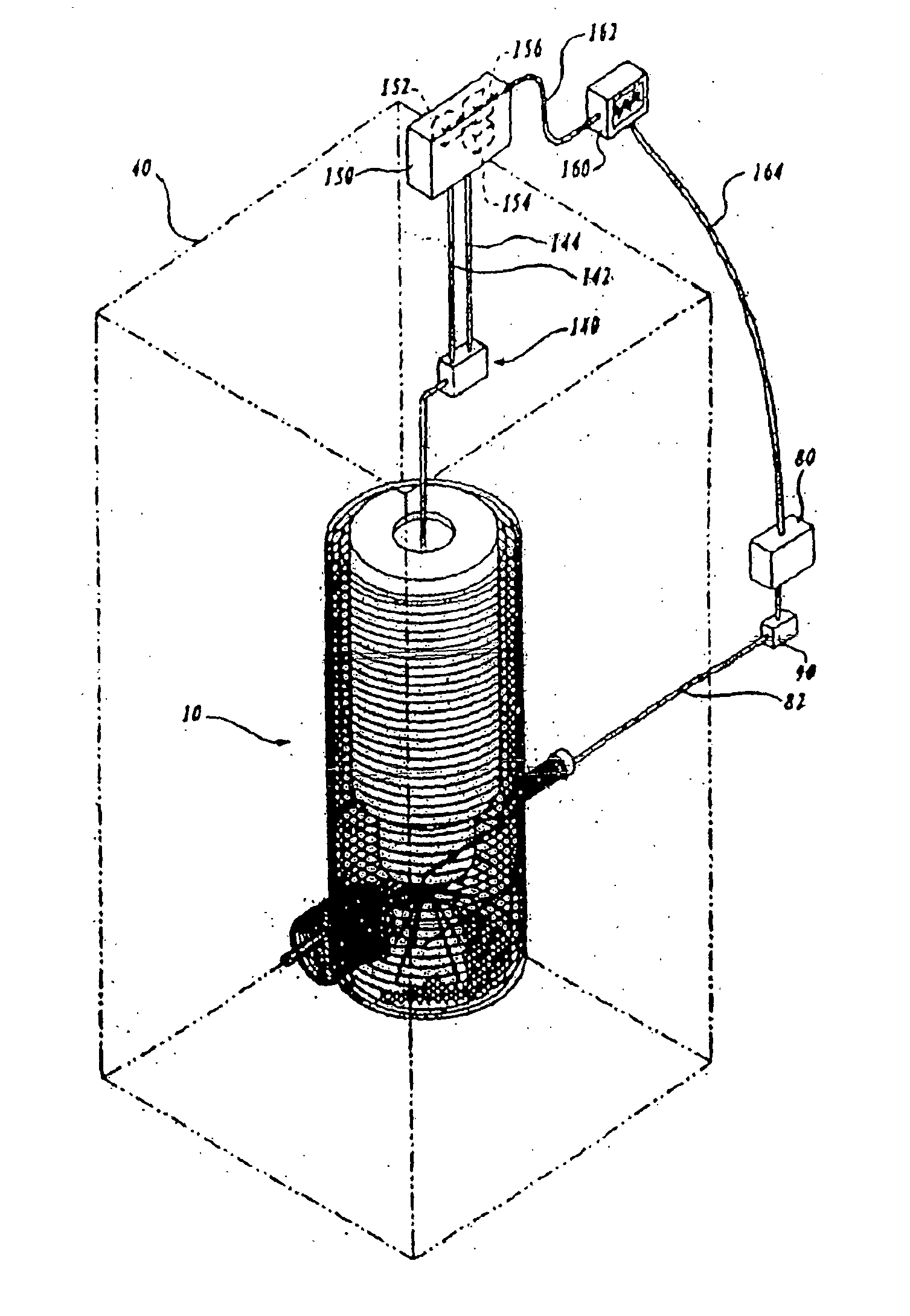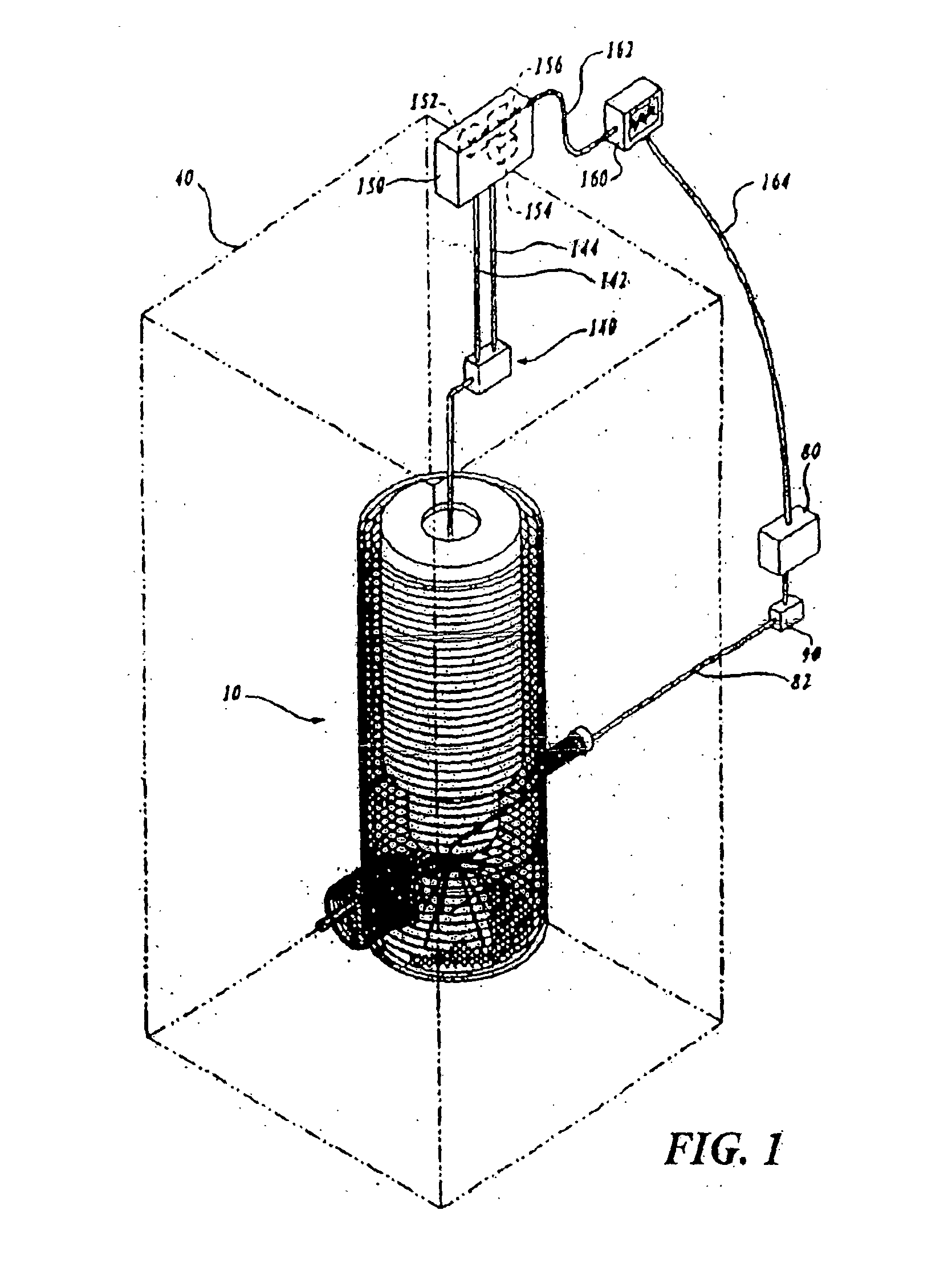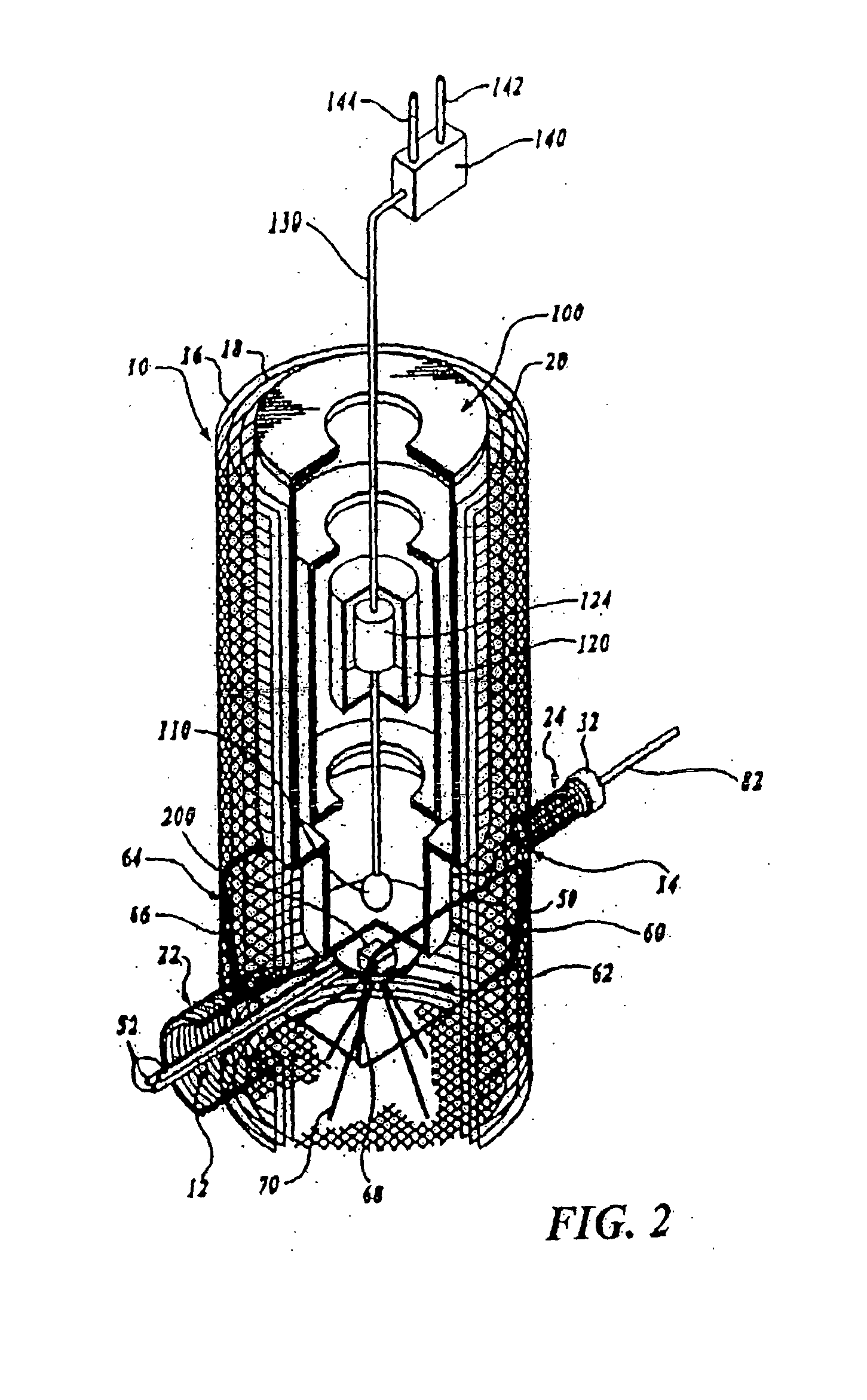Apparatus and method for transducing an in vitro or mammalian system with a low-frequency signal
a technology of low-frequency signals, applied in the field of apparatus and method for transducing in vitro or mammalian systems with low-frequency signals, can solve problems such as unknowns
- Summary
- Abstract
- Description
- Claims
- Application Information
AI Technical Summary
Problems solved by technology
Method used
Image
Examples
first embodiment
[0126]Referring to FIGS. 1, 2 and 3, a sample of the substance 200 to be measured is placed on the sample tray 50 and the sample tray is placed within the faraday cage 10. In the first embodiment, the Gaussian white noise stimulus generator 80 is used to inject Gaussian white noise stimulus through the Helmholtz transformer 60. The noise signal creates an induced voltage in the gradiometer 110. The induced voltage in the gradiometer 110 is then detected and amplified by the SQUID 120, the output from the SQUID is further amplified by the flux locked loop 140 and sent to the SQUID controller 150, and then sent to the dual trace oscilloscope 160. The dual trace oscilloscope 160 is also used to display the signal generated by Gaussian white noise stimulus generator 80.
[0127]The Gaussian white noise stimulus signal (or other magnetic-field stimulus) is adjusted by altering the output of the stimulus generator 80 and by rotating the Helmholtz transformer 60 around the sample 200, shown i...
second embodiment
[0193]FIG. 11 is a flow diagram of steps carried out in scoring recorded time-domain signals according to this Time-domain signals are sampled, digitized, and filtered as above (box 402), with the gain on the magnetic-field stimulus level set to an initial level, as at 404. A typical time domain signal for a sample compound 402 is autocorrelated, at 408, using a standard autocorrelation algorithm, and the FFT of the autocorrelated function is generated, at 410, using a standard FFT algorithm.
[0194]An FFT plot is scored, at 412, by counting the number of spectral peaks that are statistically greater than the average noise observed in the autocorrelated FFT and the score is calculated at 414. This process is repeated, through steps 416 and 406, until a peak score is recorded, that is, until the score for a given signal begins to decline with increasing noise stimulus gain. The peak score is recorded, at 418, and the program or user selects, from the file of time-domain signals at 422...
third embodiment
[0197]FIG. 12 is a flow diagram of steps carried out in scoring recorded time-domain signals according to this Time-domain signals are sampled, digitized, and filtered as above (box 424), with the gain on the magnetic-field stimulus level set to an initial level, as at 426. The program then generates a series of FFTs for the time domain signal(s) at each noise stimulus gain, at 428, and these plots are averaged at 430. Using the averaged FFT plot, scoring is done by counting the number of spectral peaks that are statistically greater than the average noise observed in the averaged FFT, as at 432, 434. This process is repeated, through the logic of 436 and 437, until a peak score is recorded, that is, until the score for a given signal begins to decline with increasing magnetic-field stimulus gain. The peak score is recorded, at 438, and the program or user selects, from the file of time-domain signals at 442, the signal corresponding to the peak score (box 440).
[0198]As above, this...
PUM
| Property | Measurement | Unit |
|---|---|---|
| magnetic field | aaaaa | aaaaa |
| magnetic field | aaaaa | aaaaa |
| frequency | aaaaa | aaaaa |
Abstract
Description
Claims
Application Information
 Login to View More
Login to View More - R&D
- Intellectual Property
- Life Sciences
- Materials
- Tech Scout
- Unparalleled Data Quality
- Higher Quality Content
- 60% Fewer Hallucinations
Browse by: Latest US Patents, China's latest patents, Technical Efficacy Thesaurus, Application Domain, Technology Topic, Popular Technical Reports.
© 2025 PatSnap. All rights reserved.Legal|Privacy policy|Modern Slavery Act Transparency Statement|Sitemap|About US| Contact US: help@patsnap.com



